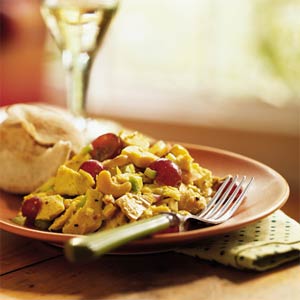Clarification: VEGAN means
no animal products are in the food (that is, no dairy, no fish, chicken, pork, beef, gelatin, and in some strict vegans, no honey). The definition of VEGETARIAN varies greatly depending on if one is lacto-ovo-vegetarian (eats dairy and eggs), pescatarian (eats fish products), or flexitarian (a new term that doesn’t mean much- surveys show that most Americans believe they are flexitarian, or ”occasionally eat meat”- but it still means you are a carnivore). Flexitarian is usually defined as a
mostly vegetarian diet, but you can consume chicken, fish, or other lean meats occasionally. This is a good goal for people to strive for, although, I do recommend that people eat fish a few times each week.

I would call myself “flexitarian” if I wanted to be trendy and label my eating style. When I was at school I was pesca-lacto-ovo-vegetarian except for the few weekends I woud be at home where my parents cooked meat. So, during college and grad school I became very familiar with cheap vegan food items (since I was on a limited budget and didn’t feel like buying raw meat and cooking it just for myself). Thus I learned to cook unique vegan protein sources and use them in recipes. Below are a list of a few that I used regularly to add protein and nutrition to meals, along with helpful websites to find out more info on the products.
TVP (Textured Vegetable Protein)
A very cheap dried form of soy protein. Rehydrate and add to any meal without adding flavor.
https://www.usaemergencysupply.com/information_center/all_about_textured_vegetable_protein.htm
Seitan or Wheat Gluten
Dr. Blair at Penn State introduced me to this during my Global Foods Class. You can find these prepackaged at Whole Foods or any healthfood store. However, I recommend making your own with wheat gluten flour, chicken broth, garlic, and any other spices. Follow the recipe listed here:
http://www.vrg.org/recipes/vjseitan.htm then use just as you would beef (bake, stir fry, grill, etc.). Very high in protein, but for all you gluten-phobes, you may want to stay away.
Tempeh
Tempeh is higher in fat than tofu, but even more delicious and nutritious (
http://www.whfoods.com/genpage.php?tname=foodspice&dbid=126). It is fermented soybeans, but don’t let that dissuade you. You can find pre-packaged in the refrigerator sections of most healthfood stores.
Nutritional Yeast
Nutritional yeast is a wonderful product because it is an excellent source of B12 for vegetarians. Vegetarians often become deficient in Vitamin B12 b/c it is mostly found in animal products. You can add this to popcorn to make it taste cheesey, add a little butter to make a cheesy tasting sauce, or add to anything to add a spicy and cheesy flavor. (
http://www.bestnaturalfoods.com/nutritional_yeast.html)
TOFU!!!
Of course I have to write about Tofu! This food product is made from soybeans. Firm varieties make a great addition to stir fries, or you can marinate in BBQ sauce and grill. Be sure to press out all the excess moisture before cooking. Use silken tofu in smoothies or to reduce the fat content in dips and cheesey recipes. (
http://www.nasoya.com/)
Quinoa
An ancient grain that is high in fiber
, protein*, and other essential nutrients. It is kind of like cous cous but way more nutritious. *See my note below
Quinoa and Soybeans offer a complete protein- many people I come across don’t believe that vegetarians can get enough protein or any high quality protein in their diets. Well, if you plan on becoming vegetarian, I recommend researching complementary proteins and making sure you eat enough of each type throughout the day (contrary to popular belief, you don’t need to eat rice and beans at the same meal). Also, eating quinoa and soy is very similar in protein quality to meat and contain all the essential amino acids that make up a “complete protein.”





